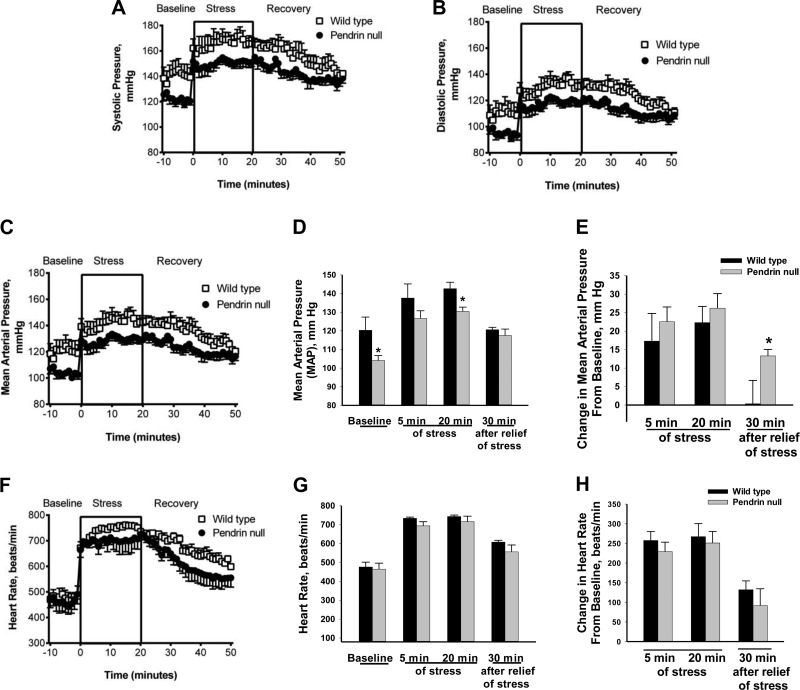Fig. 11.
Effect of pendrin gene ablation on stress-induced changes in blood pressure. Systolic (A), diastolic (B), mean arterial pressure (MAP, C), and heart rate (F) were measured by telemetry in conscious wild-type (n = 5) and pendrin-null (n = 7) mice before, during 20 min of immobilization stress, and for 30 min after termination of stress (Recovery). Under basal conditions, blood pressure was lower in pendrin-null than in wild-type mice (A–D). MAP (C and D) increased in wild-type and pendrin-null mice with immobilization stress. However, the increment in blood pressure that followed immobilization stress was similar in wild-type and mutant mice (E). As such, blood pressure remained lower in pendrin-null than in wild-type mice after 20 min of stress (D). Thirty minutes after relief of stress (Recovery), systolic, diastolic, and MAP were similar in pendrin-null and wild-type mice (A–D). As such, blood pressure returned to basal levels 30 min after relief of stress in wild-type mice but remained elevated relative to baseline in pendrin-null mice (E). Both absolute heart rate and stress-induced increment in heart rate were similar in wild-type and pendrin-null mice under these treatment conditions (D–F).

